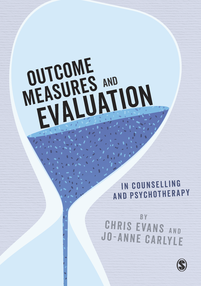The CORE-OM was the yield from a 3-year grant from the UK Mental Health Foundation, which started in 1995 and resulted in the launch of the CORE-OM and associated system in 1998. One question with all such developments is: what has been its impact?
As those working in university settings will know, one index of the impact of an individual’s research is their h-index. In 2005, physicist Jorge E. Hirsch developed a simple premise to quantify the scientific output of an individual researcher. The value of h is equal to the number of papers (N) for a researcher that have N or more citations. For example, an h-index of 10 means there are 10 articles that have 10 citations or more. This metric is useful because it discounts the disproportionate weight of highly cited papers or papers that have not yet been cited. It gets increasingly difficult to raise the h-index because the index impacts on all those articles. So, in order for that h-index of 20 to rise to 21, each of those 21 articles now needs to have individual citations of 21 or more.
So let’s suppose we imagine the CORE-OM as a researcher – what would be the h-index for the CORE-OM? Does this give us an idea of one aspect – there are many others – of the impact of the CORE-OM?
Well, like everything, nothing is straightforward. But a simple search on the term ‘CORE-OM’ in SCOPUS yields an h-index of 20 (one article was excluded as not relating to the CORE-OM). So, 20 articles using the CORE-OM have each been cited on SCOPUS at least 20 times.
The top 2 publications, each cited over 200 times, understandably relate to the key initial articles on the development of the CORE-OM and published in the British Journal of Psychiatry (2002) and the Journal of Consulting and Clinical Psychology (2001).
However, some key papers, particularly those early on, did not explicitly use the term ‘CORE-OM’, and some articles might use the CORE-OM in their report but not cite it in the Abstract, which is the usual source for electronic searches to pick up related work. Some early work was not identified, as some journals are not sampled by SCOPUS. However, there was the slightly inexplicable exclusion of an article containing ‘CORE-OM’ in the title!
So a slightly wider search (together with some filtering as more inclusive search terms collect work that is not relevant) yielded an h-index of 23. This search strategy picked up 2 early publications relating to the CORE-OM, both of which appeared in Journal of Mental Health (1998, 2000). However, even this search did not pick up some important articles that used other versions of the CORE-OM, in particular the Short Form A and B versions.
In contrast, a search of ‘CORE-OM’ on Web of Science yielded an h-index of 22 after a couple of papers were deleted as the research did not focus on the CORE-OM. The top 2 articles were the same as in the SCOPUS search. However, WoS does not search Journal of Mental Health, so some of the early work is not detected regardless of extending the search terms, but the search did pick up interesting work using the Short Form versions of the CORE-OM.
So, it would seem that we can say that the CORE-OM has an h-index of 23 according to SCOPUS and 22 for Web of Science. Although the profile of articles for each database is slightly different, the slightly higher h-index for SCOPUS is consistent with the database having a wider scope than WoS – you will likely find the same if you establish the h-index for your own research.
So, what does this mean for the impact of the CORE-OM?
Well, Hirsch suggested that after 20 years of research, an h index of 20 is good, 40 would be outstanding, and 60 exceptional. So, on these simply guidelines, in less than 20 years, the CORE-OM has had a good impact.
All-in-all, I guess that’s not bad. Using the h-index in this way is not as precise as applying it to researchers (they are either an author or not). So the role of the CORE-OM in the articles varies and of course it is only one (imperfect) index of the impact that the CORE-OM has had.
If readers have examples of the impact that the CORE-OM has had for their work or practice, then let us know – we would be very interested to hear from you.
Thank you

